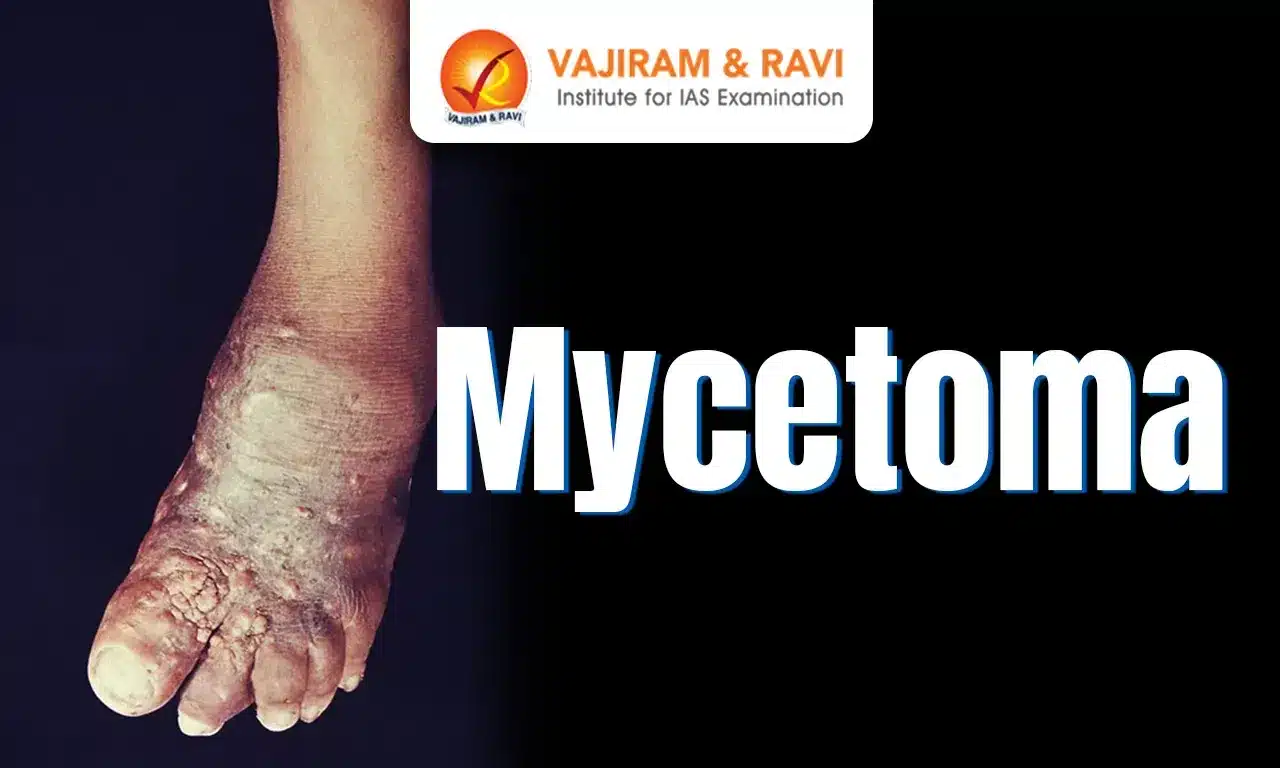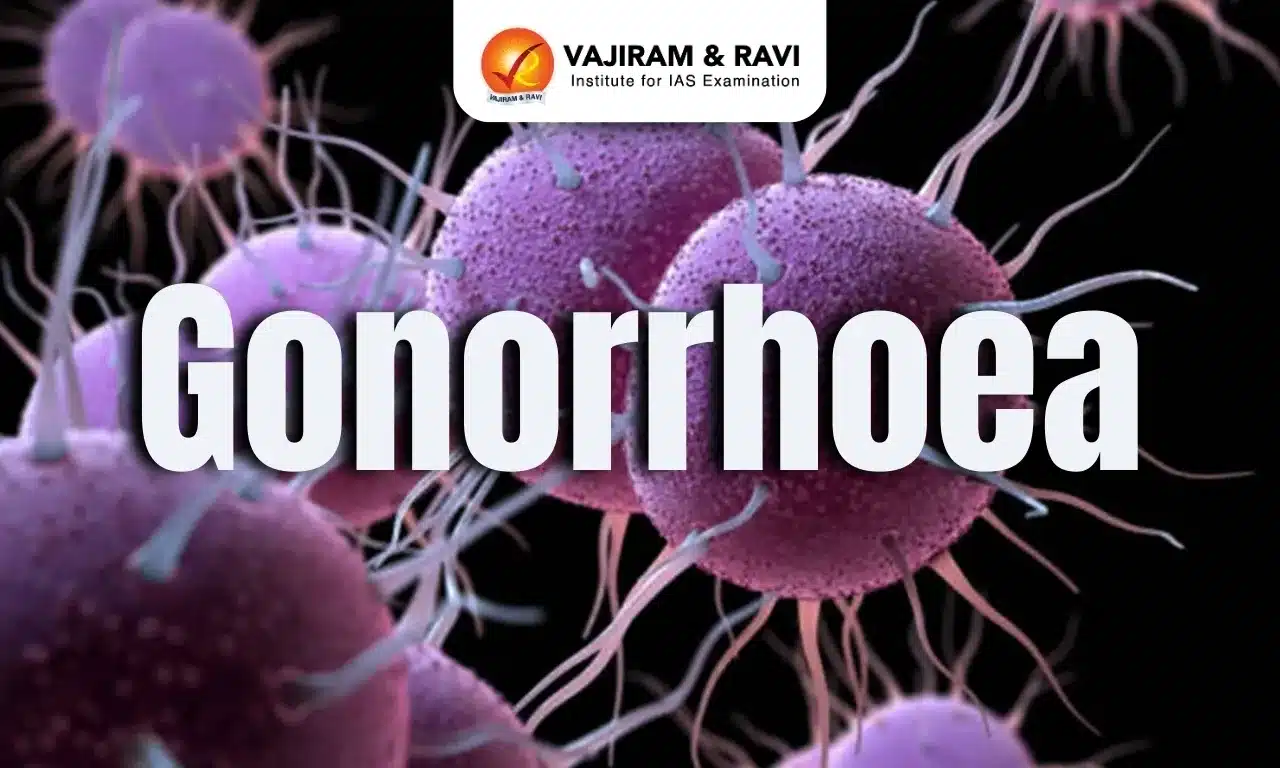Mycetoma Latest News
The world’s only research centre on mycetoma, a neglected tropical disease common among farmers, has been destroyed in Sudan’s two-year war, its director and another expert say.
About Mycetoma
- It is a chronic, progressively destructive infectious disease of the subcutaneous tissues, that spreads to affect the skin, deep tissues and bone.
- It was first reported in the mid-19th century in Madurai, India, and hence was initially called Madura foot.
- It is a unique neglected tropical diseasecaused by a substantial number of microorganisms of fungal or bacterial origins.
- The disease commonly affects young adults, mostly males aged between 15 and 30 years in developing countries.
Mycetoma Distribution
- Mycetoma occurs in tropical and subtropical environments characterized by short rainy seasons and prolonged dry seasons that favour the growth of thorny bushes.
- The causative organisms of mycetoma are distributed worldwide but are endemic in tropical and subtropical areas in the so called ‘Mycetoma belt’, which includes, among others, the Bolivarian Republic of Venezuela, Chad, Ethiopia, India, Mauritania, Mexico, Senegal, Somalia, Sudan, Thailand, and Yemen.
Mycetoma Transmission
- Transmission occurs when the causative organism enters the body through minor trauma or a penetrating injury, commonly thorn pricks.
- There is a clear association between mycetoma and individuals who walk barefooted and are manual workers.
Mycetoma Symptoms
- Symptoms are similar for bacterial and fungal mycetoma.
- Both appear as firm, painless masses under the skin. These masses usually appear on a person’s foot but can form anywhere on the body.
- Mycetoma masses start small, but over time they can grow larger and develop oozing sores.
- The affected limb can become deformed or unusable.
- The discharge from the oozing sores can contain sand-like particles called “grains,” that can be white, yellow, red, brown, or black.
- If left untreated or treatment fails, it can spread to other areas of the body and even result in blood infections.
- Long-term mycetoma can eventually destroy the underlying muscle and bone.
Mycetoma Treatment
For bacterial mycetoma, treatment consists of a combination of antibiotics, whereas for fungal mycetoma, treatment consists of a combination of antifungal drugs and surgery.
Mycetoma FAQs
Q1. What causes mycetoma?
Ans. Mycetoma is a disease caused by certain types of bacteria and fungi found in soil, plant matter, and water.
Q2. How does Mycetoma usually enter the human body?
Ans. Penetrating injuries like thorn pricks
Q3. In which part of the body does Mycetoma most commonly begin?
Ans. Foot
Source: ET
Last updated on December, 2025
→ Check out the latest UPSC Syllabus 2026 here.
→ Join Vajiram & Ravi’s Interview Guidance Programme for expert help to crack your final UPSC stage.
→ UPSC Mains Result 2025 is now out.
→ UPSC Notification 2026 is scheduled to be released on January 14, 2026.
→ UPSC Calendar 2026 is released on 15th May, 2025.
→ The UPSC Vacancy 2025 were released 1129, out of which 979 were for UPSC CSE and remaining 150 are for UPSC IFoS.
→ UPSC Prelims 2026 will be conducted on 24th May, 2026 & UPSC Mains 2026 will be conducted on 21st August 2026.
→ The UPSC Selection Process is of 3 stages-Prelims, Mains and Interview.
→ UPSC Result 2024 is released with latest UPSC Marksheet 2024. Check Now!
→ UPSC Prelims Result 2025 is out now for the CSE held on 25 May 2025.
→ UPSC Toppers List 2024 is released now. Shakti Dubey is UPSC AIR 1 2024 Topper.
→ UPSC Prelims Question Paper 2025 and Unofficial Prelims Answer Key 2025 are available now.
→ UPSC Mains Question Paper 2025 is out for Essay, GS 1, 2, 3 & GS 4.
→ UPSC Mains Indian Language Question Paper 2025 is now out.
→ UPSC Mains Optional Question Paper 2025 is now out.
→ Also check Best IAS Coaching in Delhi
Tags: mycetoma prelims pointers upsc current affairs upsc prelims current affairs

















